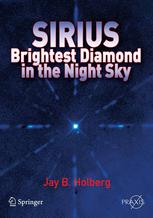

Most ebook files are in PDF format, so you can easily read them using various software such as Foxit Reader or directly on the Google Chrome browser.
Some ebook files are released by publishers in other formats such as .awz, .mobi, .epub, .fb2, etc. You may need to install specific software to read these formats on mobile/PC, such as Calibre.
Please read the tutorial at this link: https://ebookbell.com/faq
We offer FREE conversion to the popular formats you request; however, this may take some time. Therefore, right after payment, please email us, and we will try to provide the service as quickly as possible.
For some exceptional file formats or broken links (if any), please refrain from opening any disputes. Instead, email us first, and we will try to assist within a maximum of 6 hours.
EbookBell Team

4.0
16 reviewsSirius - A Diamond in the Night will tell two stories. The first and most obvious is why the star known as Sirius has been regarded as an important fixture of the night sky by many civilizations and cultures since the beginnings of history. A second, but related, narrative is the prominent part that Sirius has played in how we came to achieve our current scientific understanding of the nature and fate of the stars. These two topics have a long intertwined history, and the telling of one story eventually leads back to the other. Presently, new observations from space are revealing, in precise terms, how stars like Sirius and the Sun have evolved and what they will ultimately become, while at the same time answering some of the age-old questions about Sirius.
The book is divided into five parts. The first (Chapters 1 and 2) describes how Sirius was viewed by the ancient civilizations of Egypt, Greece and Rome. The second part (Chapters 3-5) describes how early astronomers sought to determine the nature of the stars, including the prediction that Sirius possessed an unseen companion and the eventual discovery of this white dwarf companion 18 years later. The third part (chapters 6-9) describes the major discoveries in stellar astrophysics revealed by observations of Sirius. The fourth part (chapters 10 and 11) probes the modern scientific and pseudo scientific controversies involving Sirius, including the ‘Red Sirius’ and Dogon tribe stories. The final part (Chapters 12 and 13) highlights modern observations made with the Hubble Space Telescope and other spacecraft of the white dwarf companion.